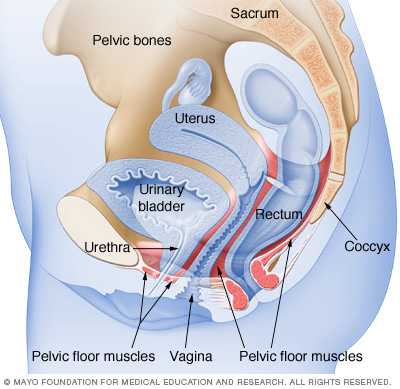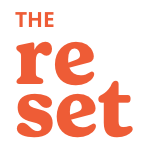
kegels_ for an oops-free workout
Let’s be honest. We know your eyes roll back in your head at the first mention of “pelvic floor exercises,” but the deep muscles of the female core are super important… and sometimes you don’t know how important until you’ve had your first baby and you have to wear a maxi pad to watch a comedy flick. Most of us have heard of these ambiguous “Kegel exercises” historically prescribed to women in pregnancy and postpartum to prevent, ahem, leakage and help maintain the function of the deep abdominal unit. How do you do a kegel exercise, anyway? And do you have to do them every day for the rest of your life?
ARE KEGELS EVEN NECESSARY?
It depends.
If you are looking for a way to:
- Prevent and correct bladder control issues
- Prevent and treat hemorrhoids
- Restore proper… um… tightness after childbirth
- Enhance intercourse for yourself and your partner
- Ease future childbirths and recovery
…then you should do kegels! If you want to feel loose, sore, unsatisfied and unable to control your bladder, be our guest.
** in some cases, a woman’s pelvic floor muscles can be too tight in postpartum and kegel exercises are not recommended; if you had a traumatic delivery, have pain during intercourse, or suffer from incontinence, please see your qualified physiotherapist for a personalized treatment plan. In third trimester, when the pelvic tissues are loosening and trying to open up, kegels may be ineffective and counterproductive; consider resuming in postpartum instead.
Watch our fab video all about the pelvic floor & core in pregnancy & postpartum!
So what the heck is a Kegel, anyway? Kegels are named after the doctor who designed them, Dr. Arnold Kegel. A kegel exercise strengthens the muscles of the pelvic floor — these muscles support the uterus, vagina, bladder and rectum. Pretty important muscles when you think about what it is they’re holding up. There are many factors that can weaken the pelvic floor muscles: childbirth, aging, chronic coughing, pregnancy, and even just being overweight.

pelvic-floor-diagram image source: mayoclinic.org
What happens when they get weak? Do we need to go through the loose, sore, peeing yourself scenario again? Not only that, the pelvic floor muscles are directly connected to another key component of your core: the transversus abdominis (TA). The TA functions as a stabilizer and “girdle,” if you will, for the other abdominal muscles. When the inner core muscles are properly contracting together, you have the most stable, safe, and strong position from which to perform ALL exercises and daily movements. You also have the sleekest possible look to your midsection, the holy grail of postpartum.
SO, HOW DO YOU DO THEM?
To find your pelvic floor muscles, think of stopping mid-stream while peeing or of contracting as you would during intercourse. If you have never done Kegel exercises before, try sitting on the floor cross-legged, and push down (as you would during childbirth or a bowel movement) to feel the floor pushing back against you; then, lift away from the floor. Did you lift? You just did a “Kegel.”
As you get used to contracting your pelvic floor and doing your kegel exercises, notice that your abdominal area should tighten as you squeeze your pelvic floor up. That is the tightening of your “inner core” muscles together, as nature intended. Try putting one hand on or below your belly button as you do your kegel exercises, and see if you can create movement in your midsection while you do the kegels. As your pelvic floor comes up, your belly button moves toward your spine. Your shoulders should remain down, away from the ears, and you should be able to speak and breathe normally (although sometimes, in the beginning, finding those pelvic floor and deep core muscles takes some concentration). In the beginning, it can help to inhale as you relax the abdomen & pelvic floor, then exhale through your mouth — like through a straw — as your contract your belly and pelvic floor.
For all kegel exercises, sit, lay on your side, or stand comfortably. If possible, keep one hand on the abdomen and focus on contracting the deep abdominal muscles inward, toward the spine, at the same time you are doing your “kegel.”
3 KEGEL EXERCISES TO TRY, FROM SIMPLEST TO MOST CHALLENGING.
Classic Kegel: contract the pelvic floor muscles, pulling them upward and holding 1-2 seconds. Repeat and build up to 20 reps.
Super Kegel: contract the pelvic floor muscles, pulling them upward, and hold as long as possible. Build up to 20 counts.
The Elevator: contract the pelvic floor muscles and pull them upward in several stages, like floors in an elevator. Pause at the top, then release in several stages downward. Build up to 6-7 floors each direction.
Kegels should be performed daily for best results. The best part about Kegels (aside from the no peeing your pants, stronger midsection, and better sex) is they can be done anytime, anywhere, while you are in the middle of doing almost anything else. If you are a new mom and bottle feeding or breastfeeding several times per day, do them at each feeding. You’ll forget sometimes but, chances are, you’ll remember once or twice per day and be on your way to a healthier pelvic floor in no time.
Once you’ve mastered the Kegel Elevator, you’re ready for the Kegel Olympics. Just kidding. But you can probably stop doing Kegels. Once you’ve trained the core and pelvic floor to function regularly, your body will automatically “fire” when you need to call those deep core muscles into action, such as when lifting something heavy or…

heel-slide-diastasis-pelvic-floor
…another great time to do a kegel exercise is during any core workout (or any workout at all, really). As we mentioned, the pelvic floor works together with the abdominal muscles; no muscle functions alone in the body. Here’s an idea for the next time you do a plank: contract not just your abs but your pelvic floor and glutes (butt).
Ready, set, Kegel!
Kegels work best in combination with targeted core work like this pregnancy- and postpartum-safe core workout!
